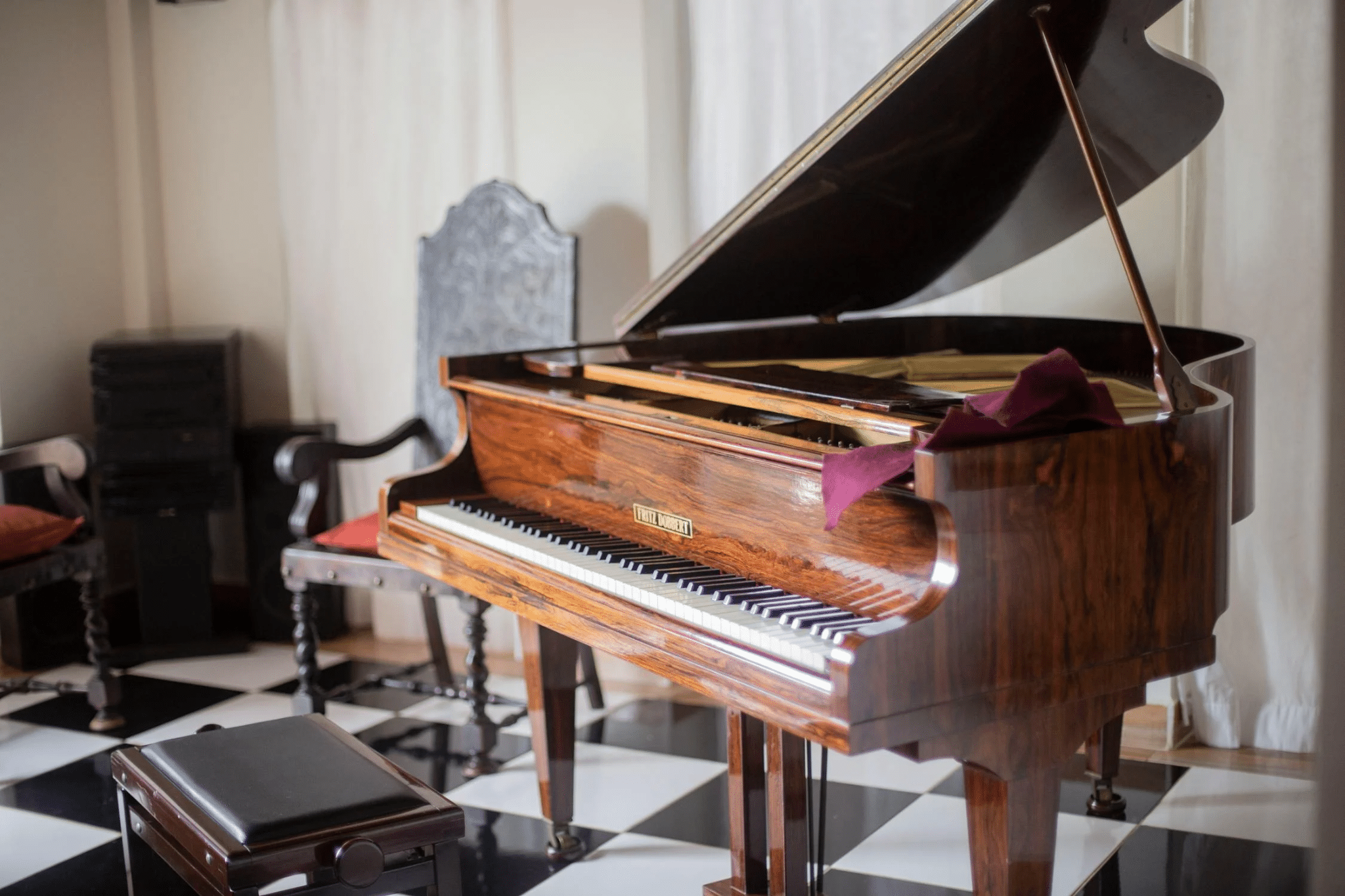Moving a piano is a challenging task because of its size and weight.
Without proper preparation, it’s easy to cause damage, whether it’s scratches on the surface or problems inside the instrument.
To avoid these issues, you need to take a few important steps before the move.
This includes packing the piano correctly, working with experienced movers, and ensuring the instrument is handled with care.
By following these guidelines, you can help ensure your piano arrives at its new home in great condition and make the moving process smoother.
Understanding the Importance of Preparing Your Piano for a Move
Moving a piano is more complicated than relocating other furniture because it’s a delicate and complex instrument.
Without proper preparation, your piano could suffer damage to its internal parts and exterior finish or even become unplayable.
Proper preparation helps prevent damage from vibrations, temperature changes, and humidity, which can harm the piano’s soundboard and strings. It also allows you to spot and fix any existing issues before the move.
Identify Potential Issues
Assess the overall condition of your piano by carefully checking for any visible signs of wear and tear, such as scratches, dents, or loose components.
Pay special attention to the legs, pedals, and cabinet to ensure they are stable and intact.
Next, look for any indications of pest infestation, such as droppings or gnaw marks.
Pests like mice and insects can inflict significant damage on the internal parts of your piano.
Finally, inspect the piano for water damage. Look for signs of warping or discoloration, as these can compromise the piano’s structure and affect its sound quality.
Check for Damages
Before you move your piano, give it a thorough check-up to ensure it arrives in top condition. Examine the strings, hammers, and dampers.
You should also look out for any signs of wear like fraying, rust, or breakage.
Damaged strings can make your piano sound off-key, while issues with hammers and dampers can throw off its overall performance.
Take a close look at the soundboard. Any cracks or separations here can lead to a funky tone, so it’s worth having a pro technician fix these before the big move.
Moreover, check the keys. If any are sticking or misaligned, they could cause trouble with playability.
Ensure All Parts Are Intact
Making sure every component of your piano is in perfect order is also important before the move.
Loose screws, bolts, or fasteners can lead to vibrations that might damage the delicate parts of your piano.
Take a moment to check these elements to prevent any issues during transport.
The pedal mechanism is another area to inspect. The smooth operation of the pedals is crucial for maintaining your piano’s functionality, so ensure they engage and disengage properly.
Also, confirm that the keyboard lid opens and closes without any hiccups and that the locking mechanism is functioning correctly.
Preparing Your Piano for the Move
Once you have thoroughly inspected your piano and identified any potential issues or damages, it’s time to prepare it for the move.
Here are some essential steps to follow when preparing your piano for a professional move:
Properly Closing and Locking the Keyboard Lid
When preparing your piano for a move, start by closing the keyboard lid firmly. Make sure it’s properly latched to prevent it from swinging open during transit.
If your piano has a locking mechanism, use it to provide extra security.
This will protect the keys and internal components from dust, debris, and any potential impacts, ensuring your piano arrives in pristine condition.
Securing Loose Parts
Before transporting your piano, take the time to secure any loose parts, like removable music stands or lyres.
Carefully remove these components and pack them separately using bubble wrap or other protective materials to prevent movement and potential damage.
You should also label and place them in a designated box to keep everything organized and easily accessible when you’re ready to reassemble your piano.
Padding and Covering the Piano
Proper padding and covering are essential for protecting your piano during a move.
Wrap the entire piano with moving blankets or specialized piano covers, securing them with packing tape or straps.
The blankets should be snug but not overly tight to prevent damage to the piano’s finish.
Add extra padding, such as foam or bubble wrap, to particularly vulnerable areas like corners and edges to absorb shocks and vibrations during transport.
Avoid using plastic wrap directly on the piano, as it can trap moisture and harm the wood’s finish.
Instead, opt for breathable materials to ensure proper air circulation and maintain the piano’s condition.
Choosing the Right Professional Movers
Selecting the right movers for your piano is vital for a smooth and successful relocation. Pianos are delicate and require specialized expertise and equipment for safe transportation.
Here are some essential factors to consider when selecting a piano moving company:
Finding a Reliable Piano Mover
Choosing a dependable piano mover is essential to ensure the safety of your instrument during transportation.
Look for movers with expertise in piano relocation and a proven track record. Ensure they are insured and experienced with pianos of your specific type.
Eric Taylor, the owner of Fort Mill Friendly Movers (fortmillmoving.com), emphasizes, “When moving a piano, experience and expertise are crucial.
We take great care in handling these delicate instruments, using specialized equipment and techniques to ensure they arrive in perfect condition.”
Online reviews and recommendations from music professionals can provide valuable insights.
Furthermore, remember that a reliable mover will offer a detailed estimate and address any concerns, ensuring a smooth and secure moving experience.
Checking the Mover’s Credentials
Verify that the piano moving company you are considering is properly licensed and insured.
A reliable mover should have the appropriate licenses and insurance coverage to protect your piano in case of any mishaps or accidents during the move.
Request proof of insurance and licensing before making your final decision.
Discussing the Moving Plan
When planning your piano move, contact potential movers and provide details about your piano, such as its size and weight.
A professional mover will ask questions to understand your piano’s needs.
Discuss the move’s date, time, route, and any challenges that might come up to ensure everyone is aligned.
Ask about their equipment, like piano dollies and padded covers, and check their staff’s experience.
Request a detailed estimate from each company, including costs and additional services.
While cost is important, prioritize reliability and expertise over just the cheapest option.
Wrapping Up
Properly preparing your piano for a move is key to protecting it from damage.
By inspecting and securing your piano, choosing experienced movers, and planning carefully, you ensure a smooth transition.
With these tips in hand, you’re ready to contact professional movers, finalize your plan, and get your piano set for a safe journey to its new home.








